
Замечательный аэропорт работает в самом сердце Европы. называемый EuroAirport Базель-Мульхауз-Фрайбург (BSL, MHL, EAP)Там, где международные границы размываются, а дипломатические инновации улетучиваются.
Интересно, что аэропорт имеет 3 Коды IATABSL, MHL и EAP. Это один из самых отличительных транспортных узлов континента, позволяющий пассажирам путешествовать по нескольким странам без необходимости покидать одно здание терминала, отмеченный Bag Pack и Go, быстро растущий туристический сайт.
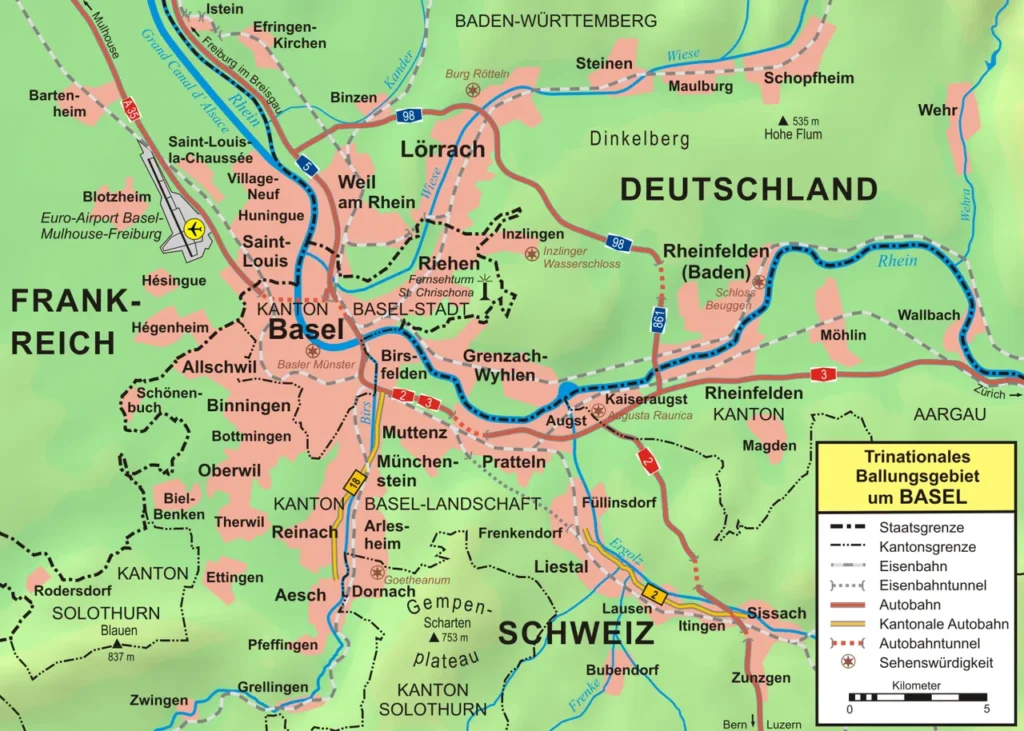 Расположение аэропорта относительно Базеля и его окрестностей; Фото Википедия
Расположение аэропорта относительно Базеля и его окрестностей; Фото ВикипедияEuroAirport В 3 странах
Объект действует из административной коммуны Сен-Луис во французском регионе Эльзас, в частности, в трехнациональном Еврорайоне Базеля.
Аэропорт служит основной базой для easyJet (U2) и в основном выполняет рейсы, соединяющие европейские столичные центры с популярными местами отдыха.
История Базель-Мульхауз-Фрайбург Аэропорт
Необычная эксплуатационная структура аэропорта восходит к 1949 году. Франция Швейцария подписала новый международный договор. Это соглашение установило правовую основу, которая позволяет объекту функционировать под двойной юрисдикцией, несмотря на его расположение полностью на французской территории в регионе Эльзас.
Швейцарские власти признали стратегическую ценность доступа к этому авиационному участку и построили специальную беспошлинную дорогу, соединяющую их территорию непосредственно с аэропортом. Инвестиции в инфраструктуру создали то, что чиновники теперь называют швейцарским сектором, превратив часть французской почвы в функциональную операционную зону Швейцарии.
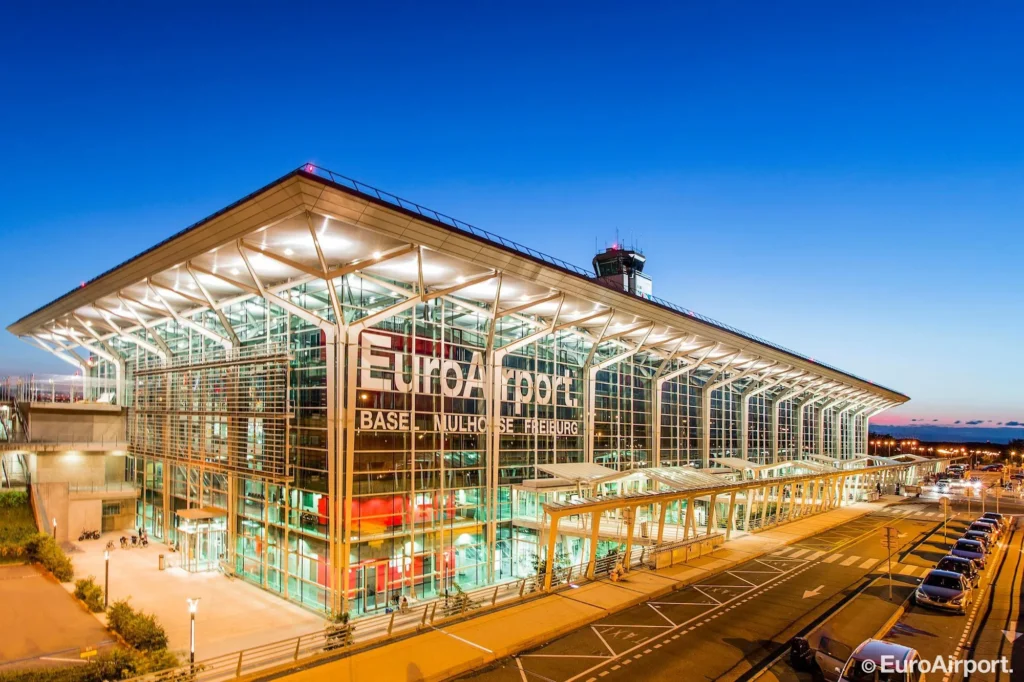 Фото: EuroAirport Базель Мулхаус Фрайбург (LinkedIn)
Фото: EuroAirport Базель Мулхаус Фрайбург (LinkedIn)Географическая позиция
Расположение аэропорта находится в пределах поразительного расстояния от трех крупных европейских городов.
Базель, Швейцариянаходится в нескольких километрах, в то время как Фрайбург, ГерманияПролегает примерно 45 минут по дороге. Мулхаус, Франциязавершает треугольник. Этот объект служит естественной точкой сближения для путешественников из всех трех стран.
Это стратегическое позиционирование позволяет жителям Германии получить доступ к недорогим вариантам рейсов, которые обычно недоступны в их внутренних аэропортах.
Швейцарские путешественники получают выгоду от расширения маршрутных сетей и конкурентных цен. Французские пассажиры пользуются удобством крупного международного центра в пределах своих границ.
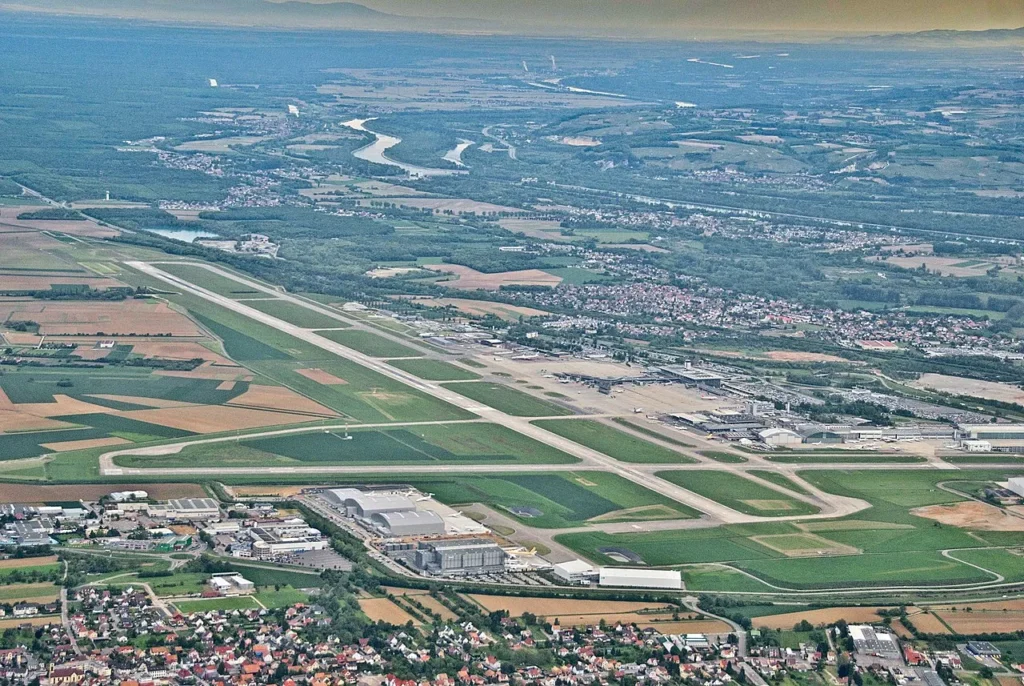 EuroAirport; Фото Википедия
EuroAirport; Фото ВикипедияДвойная терминальная система
Пассажиры, прибывающие в аэропорт, сталкиваются с уникальным выбором при посадке. Терминальная инфраструктура делится на два отдельных сектора, каждый из которых работает в разных национальных юрисдикциях.
Путешественники могут выйти через французский терминал, пройдя через стандартные французские таможенные и иммиграционные процедуры.
Кроме того, пассажиры могут следовать указателям, направляющим их в швейцарский сектор. Этот маршрут проходит через систему стеклянных коридоров, которая направляет путешественников на территорию, контролируемую Швейцарией.
Швейцарские пограничники обрабатывают этих пассажиров, которые затем появляются на швейцарской земле, несмотря на французские географические координаты.
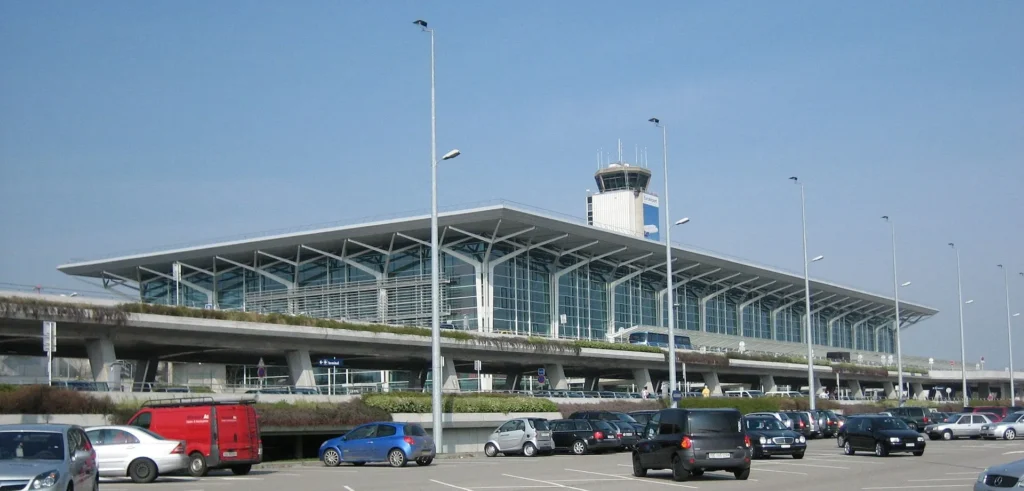 Внешний терминал; Фото Википедия
Внешний терминал; Фото ВикипедияОперативная шкала
Средства обработки почти 9 миллионов пассажиров Это доказывает, что дипломатические инновации могут работать в коммерческих масштабах. Этот пассажиропоток ставит аэропорт в число значимых региональных авиационных хабов Европы, демонстрируя, что международное сотрудничество может создать экономически выгодные решения.
Успех аэропорта выходит за рамки количества пассажиров и включает показатели операционной эффективности.
Общие обязанности по обеспечению безопасности между французскими и швейцарскими властями создают избыточные системы безопасности при сохранении упорядоченных пассажирских потоков. Экономическое сотрудничество позволяет обеим странам получать прибыль от туризма и деловых поездок.
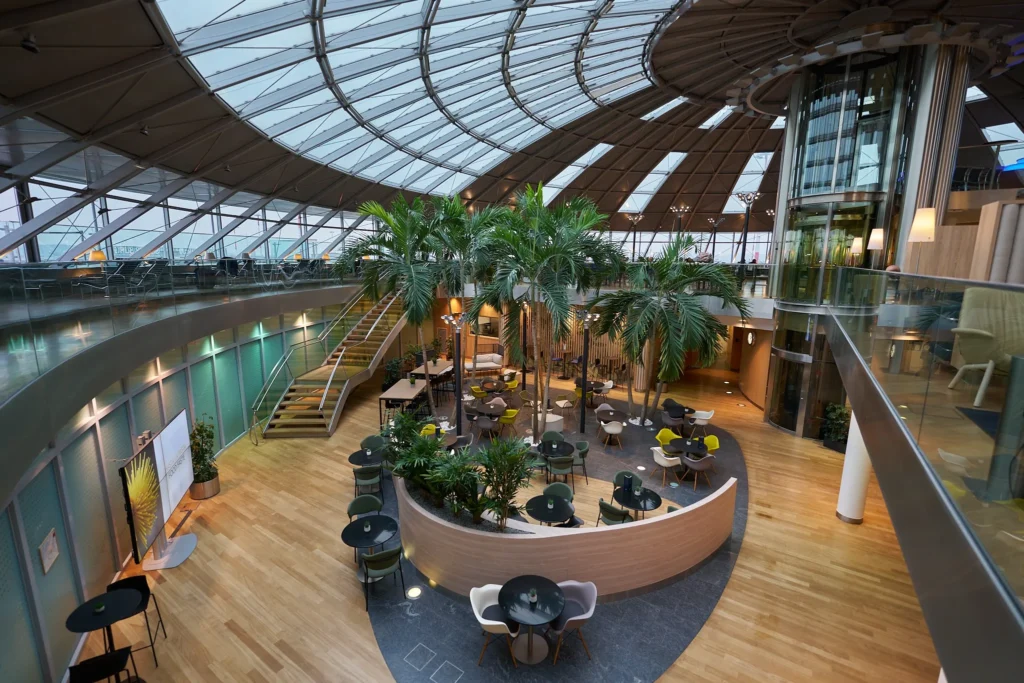 Sky Lounges at EuroAirport; Photo- EuroAirport Basel Mulhouse Freiburg (Facebook)
Sky Lounges at EuroAirport; Photo- EuroAirport Basel Mulhouse Freiburg (Facebook)Культурная интеграция
Терминальная среда демонстрирует, как национальные границы могут сосуществовать в общих пространствах. Магазины швейцарского сектора показывают цены в швейцарских франках и работают в соответствии со швейцарскими коммерческими правилами. Сотрудники общаются на немецком языке, что отражает языковые предпочтения швейцарских путешественников.
Французский сектор поддерживает традиционные французские коммерческие и лингвистические практики. Сохранение культуры на совместном объекте демонстрирует, как международное сотрудничество может уважать национальную идентичность, создавая функциональное единство.
Туристические фотографы и любители авиации регулярно посещают аэропорт, чтобы задокументировать его необычные эксплуатационные характеристики. Двойные приветственные знаки, обозначающие как французские, так и швейцарские территории, создают уникальные возможности для фотографирования, недоступные в любой точке мира.
Любители географии ценят объект как ощутимый пример того, как политические границы могут адаптироваться для практических целей. Аэропорт представляет собой успешную международную дипломатию, воплощенную в повседневную оперативную реальность.
 Eurowings A320 в EuroAirport; Фото- Heute.at
Eurowings A320 в EuroAirport; Фото- Heute.atМеждународное управление границами
The EuroAirport Базель-Мульхауз-Фрайбург Это демонстрирует, как страны могут сотрудничать, чтобы создавать решения, которые служат взаимным интересам при уважении суверенитета.
Этот механизм служит доказательством того, что границы могут способствовать установлению связей, а не разделению, когда страны подходят к сотрудничеству с творческим подходом и взаимным уважением.
Этот аэропорт доказывает, что дипломатические инновации могут создать практические преимущества для миллионов путешественников, сохраняя при этом отличительные национальные характеристики, которые определяют европейское разнообразие.
Оставайтесь с нами. Следуйте за нами в социальных сетях для последних обновлений.
Присоединяйтесь к нам в Telegram Group для последних обновлений авиации. Следуйте за нами в Google News
Старейшие аэропорты мира No6 удивят вас
В этом аэропорту самолеты приземляются сразу в трех странах! Впервые появился на Aviation A2Z.





![Кремлевская пропаганда, пребывая в ступоре после разворота Трампа, использует «двойников» Путина [GOWORIT MOSKWA]](https://cdn.oko.press/cdn-cgi/image/trim=35;0;43;0,width=1200,quality=75/https://cdn.oko.press/2025/07/Goworit-Moskwa-Trump.jpg)





